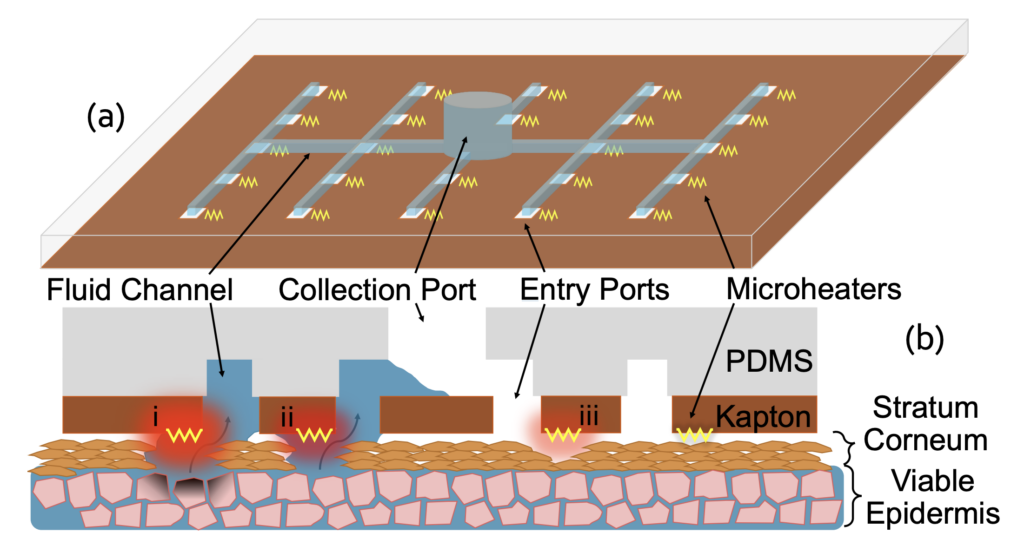Needle-free sampling of interstitial fluid for health monitoring

For health monitoring, medical diagnostics are increasingly moving away from the use of blood or urine and pivoting towards the sampling of dermal interstitial fluid, the extracellular fluid that lies between blood vessels and tissues. Development of minimally invasive technologies to collect this extracellular fluid is a high priority. A recent paper from Prof. Mak Paranjape’s group, “A needle-free transdermal patch for sampling interstitial fluid,” published in IEEE Transactions on Biomedical Engineering, reports the development and testing of a flexible, Band-Aid-like patch for sampling interstitial fluid. This patch uses resistive heating elements to thermally porate the outer layer of skin, allowing the fluid to exude from the deeper skin tissue. The fluid is transported to an on-patch reservoir through microfluidic channels. Experiments demonstrate that the device is able to rapidly collect sufficient interstitial fluid for biomarker testing. This technology holds promise for a wide array of biomedical applications, especially when integrated with on-patch testing.
This research was conducted by a team of students working with Prof. Paranjape, including Daniel O’Brien (G’22), Ph.D. student and Healy Fellow Darrian Mills, and undergraduate biophysics major Joseph Farina (C’23). The work was funded in part by NSF grant 1938995.
